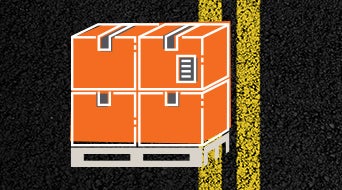FREIGHT CLASSIFICATION DEMYSTIFIED
Class is not just important in the worlds of etiquette and business – it's also a vital aspect of freight shipping, albeit with a slightly different meaning. When we refer to class in the shipping world, we're talking about freight classification. It's a subject every small and mid-sized business should have some familiarity with, which is why we'd like to give you a brief class on class when it comes to freight.
Freight Classes Explained
There are many factors that go into determining the price of your freight shipment, but class is both one of the most critical and most often misunderstood. Freight classes provide a common ground between shippers and carriers to help determine the appropriate cost of a given freight shipment. Fail to classify your freight correctly, and your shipments can be delayed or incur post-shipment reclassification charges from carriers. The National Motor Freight Traffic Association (NMFTA) standardizes freight classes in a system called the National Motor Freight Classification, or NMFC.
Learn more about the basics of freight classification.
Why is the NMFC Important?
The NMFC provides a comparison of commodities that are transported via freight. It groups commodities into classes based on four key characteristics: freight density, handling, stowability and liability. By having one established standard in the freight industry, carriers and shippers can fairly evaluate and negotiate pricing on shipments. Using freight classes allows everyone to “speak the same language” when it comes to freight shipment costs.
The Necessity of Using the Right NMFC Code
A really easy way to add cost and time to your shipment is to cut corners on determining the right NMFC code. Using an incorrect code when you are getting a shipping quote will result in the carrier performing a reclassification of your shipment, which can add both time and cost. Properly classifying your shipment on the bill of lading is one of the most important things you can do to ensure an accurate quote and avoid unexpected charges or shipping delays.
It's critical to never try to guess your freight's class. If you get your class wrong, it can reduce the carrier's liability if there's an issue with your shipment. Deliberately entering a lower class to try to save money doesn't pay off either, because the carrier will inspect your shipment and apply additional charges if the class is wrong. It's also important to include the right item number on your bill of lading (BOL).
Most of all, stay prudent: the NMFC is constantly evaluated to ensure that it is accurately reflecting the current state of freight shipping and the needs of both carriers and shippers. These evaluations result in changes to the classification codes from time to time, so you should routinely check when creating new shipments to ensure you're still using the correct information. Curious to learn more? Explore the differences between NMFC codes and fright class.
How to Calculate your Freight Class
SpeedShip®, our easy-to-use online shipping tool, can help you determine and enter the correction classification for your shipment. There are also numerous freight class calculators available online – you simply need to enter in your shipment's dimensions and you will be given the recommended class to use.
Shipping Classes Explained by your Logistics Experts
We hope this information has helped de-mystify the freight classification process a bit. Even when you're armed with definitions and calculators, however, deciphering freight class can sometimes be a complex task. The shipping experts at a trusted third-party logistics provider like Worldwide Express are always available to answer all of your classification-related questions and ensure that you're using the right class with every shipment, every time. Get a shipping consultation today and get the freight class guidance you need.
